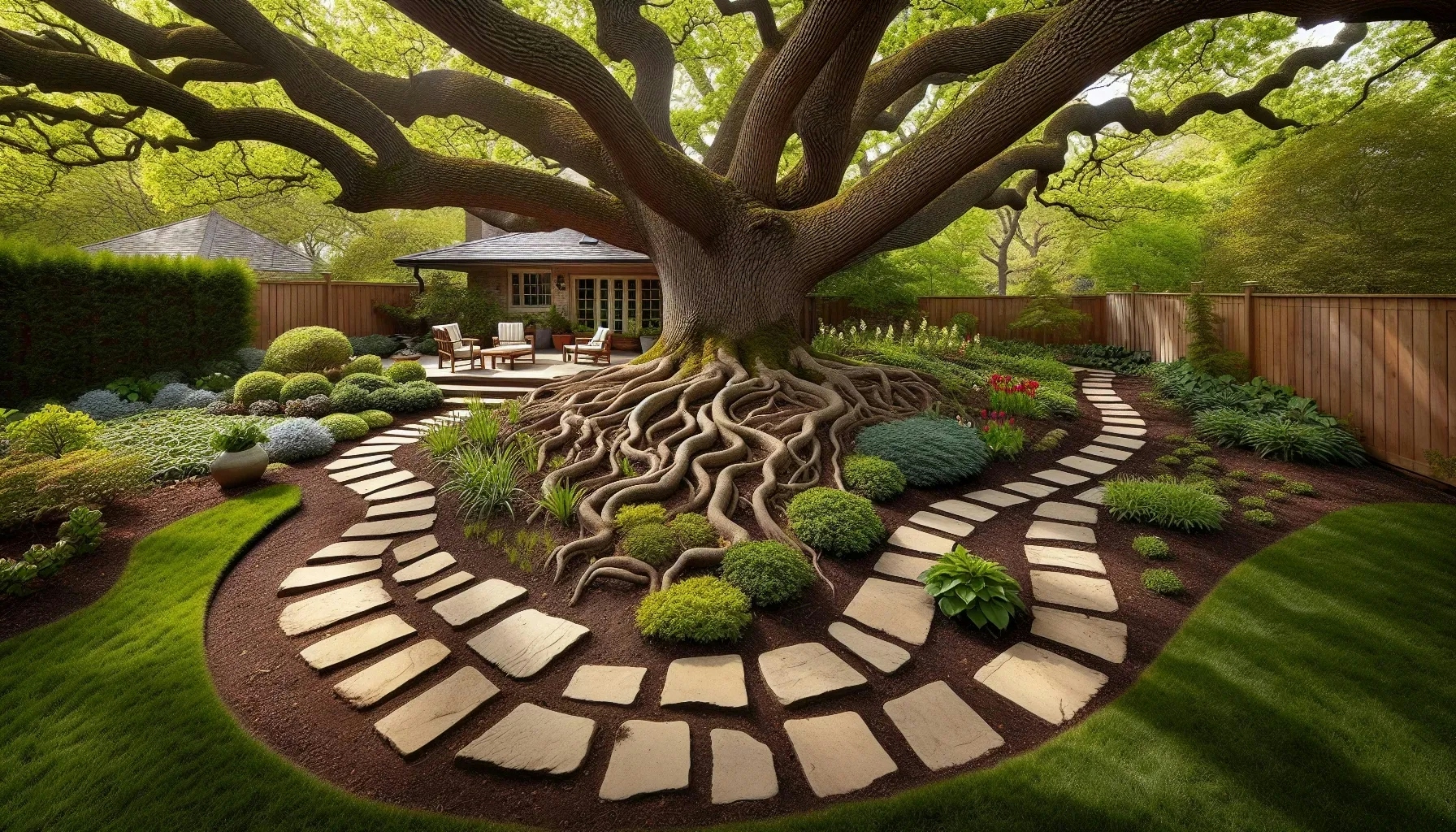How Do You Adapt Landscape Designs for Unexpected Conditions?
Gardening.guru

How Do You Adapt Landscape Designs for Unexpected Conditions?
When unexpected site conditions arise, even the most meticulously planned landscape designs must be adapted, as revealed by a Marketing Manager who transformed a rocky challenge into a garden highlight. Along with industry leaders, we've gathered additional insights and practical solutions that showcase the ingenuity of landscapers. These range from strategic drainage systems to ensuring compliance with zoning regulations for the benefit of the community.
- Transform Obstacles into Features
- Adapt Around Underground Utilities
- Adjust Plant Selection for Climate Resilience
- Incorporate Native Plants for Ecological Stability
- Implement Strategic Drainage for Water Management
- Design for Flexibility in Future Landscaping
- Choose Plants Suited to Soil Conditions
- Comply With Zoning for Community Benefit
Transform Obstacles into Features
I had a bit of a situation on a job in a local park. We planned to put in a bunch of native plants and a walking path. But when we started digging, we hit solid rock just a wee bit below the surface. It was not quite what we expected, and it threw a spanner in the works for our original design. So, we had to think on our feet. Instead of fighting against the rock, we decided to work with it.
We turned the area into a rock garden. We selected plants that thrive in rocky soil, like certain native grasses and groundcovers, and arranged them among the natural rock features. Then, we adjusted the path to weave through the rock garden, making it a feature rather than an obstacle.
The result was a pretty choice. It ended up being a unique spot in the park that highlighted the natural landscape instead of changing it. It became a favorite for visitors wanting a bit of nature and tranquility. It showed me that sometimes, the land tells you what it needs, and you just have to listen and adapt.

Adapt Around Underground Utilities
There was this one project I worked on where we had this gorgeous plot of land slated for development. We had an incredible landscape design planned out, full of lush greenery and winding pathways. But as soon as we started digging, we hit a bit of a snag. It turns out there were some unexpected underground utilities running through the site that we hadn't accounted for in our initial plans.
Now, instead of panicking, our team saw this as an opportunity to get creative. We knew we had to adapt our landscape design to accommodate these unexpected site conditions while still maintaining the integrity of our vision. So, we sat down and brainstormed some solutions.
After some careful consideration, we decided to tweak the layout of our pathways and adjust the placement of certain features to work around the utilities. We also worked closely with our landscape architects to choose plants and materials that wouldn't interfere with the utilities or require extensive excavation.
In the end, we were able to come up with a revised landscape design that not only worked with the site's constraints but actually enhanced the overall aesthetic of the project. It was a great example of how being flexible and thinking outside the box can lead to some truly innovative solutions in real estate development.

Adjust Plant Selection for Climate Resilience
In the early '90s, we undertook the task of landscaping a retention area using over 30,000 floodplain plants, with the intent to plant species that could withstand flooding. The state authorities installed tiles and turnpikes to enable drainage of the swampy area, but unfortunately, the plants died due to insufficient moisture. Two years later, the authorities requested us to plant native plants in the same area to beautify and enhance the space, which was located in a metropolitan city area. The planting made a significant difference both times, but the landscape architects had to modify the landscaping design scheme to adapt to climate change.

Incorporate Native Plants for Ecological Stability
Landscape architects often incorporate plants that naturally thrive in the local environment. This approach bolsters the site's ecology, helping it to withstand pests, diseases, and extreme weather conditions more effectively. It also reduces the need for chemical treatments and irrigation, promoting a self-sustaining landscape.
Over time, the use of such flora contributes to the stability and longevity of the design. Engage with your local ecosystem—consider adding native plants to your space.
Implement Strategic Drainage for Water Management
When unexpected water management issues arise, such as heavy rainfall or flooding, landscape architects must think on their feet. Strategic drainage solutions become essential to handle excess water and prevent damage to the landscape. They might design sloped terrains, swales, or incorporate permeable materials that allow water to seep through the ground.
This proactive approach not only handles immediate concerns but also contributes to sustainable water management practices in the long run. Review your property's water management system and explore potential upgrades for a healthier landscape.
Design for Flexibility in Future Landscaping
Flexibility is a key strategy employed by landscape architects to prepare for the unexpected. They may introduce design elements that can be easily adjusted or reconfigured in the future. This could mean creating spaces that are multi-functional or planting gardens that can be expanded.
By planning for change, they ensure that the landscape can adapt to new conditions, trends, or user needs without a complete overhaul. If your garden feels too rigid, consider adding elements that offer flexibility and room to grow.
Choose Plants Suited to Soil Conditions
Soil conditions can greatly affect the outcome of a landscaping project. For example, in areas with clay-heavy soil that retains moisture, landscape architects might choose plants that can tolerate wet conditions, or in sandy soils that drain quickly, they may select drought-resistant varieties.
The use of appropriate materials can help ensure the landscape remains healthy and robust against site-specific challenges. Check the compatibility of your landscape materials with local soil to promote a thriving outdoor area.
Comply With Zoning for Community Benefit
Compliance with local zoning laws and regulations might require landscape architects to modify their plans. These modifications can range from adjusting the height of structures, changing the percentage of soft-to-hard landscaping areas, or even adapting the use of certain materials.
Staying compliant not only ensures the legality of the design but can also open up opportunities for creating a space that benefits the community while respecting its rules. Always keep zoning regulations in mind when planning changes to your landscaping.